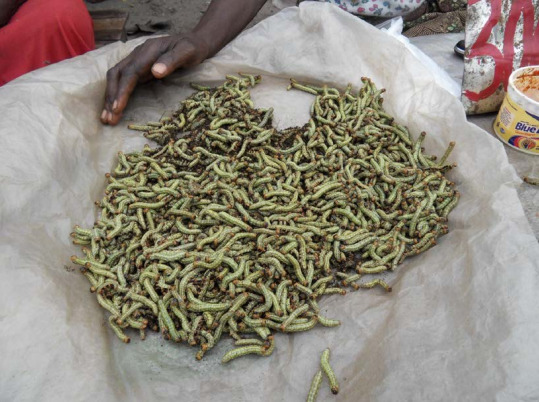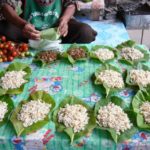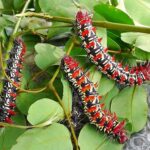My first experience with edible caterpillars took place in 1985 when my wife and I lived at Kavwaya near Kisantu in what was then the Bas-Congo province of D.R. Congo. On one occasion I was shown how to hunt for Minsangula caterpillars by a group of children from the village. Scrambling through dense bush they would stop now and then to call out “Yi Yi”. If the caterpillars were present, they would jerk from side to side on the twigs of the trees where they were feeding and thus conveniently identify themselves.

Insects as a food source
Insects represent an important high-protein food for many rural families in central and southern Africa. Nowhere is this more the case than in the Congo. A study of animal protein consumption in the Cataractes district of Kongo Central, where much of the current study was carried out, found that 12% of the animal protein consumed was from insects (Gomez et al 1961). It is also known that many insect species are pests of a wide variety of crops throughout the world and enormous quantities of expensive, toxic substances are used to kill them. Yet many of these species are edible and traditionally have provided people with an important source of protein (Ramos-Elorduy & Pino 1994).
It is perhaps ironic that farmers frequently save crops that contain no more than 14% protein while killing insects that may contain over 75% high-quality protein (Ramos-Elorduy 1997). Insects, in general, have good food conversion rates (4 or 5 : 1). Though poultry may be more efficient, with a rate of 2.6 : 1, insects have the advantage that they convert plant material that is often not consumed by humans into highly palatable food.
More articles on this website about caterpillars can be found via the following links:
Edible caterpillars in D.R. Congo, Part 1
Edible caterpillars in D.R. Congo, Part 2
Edible caterpillars Nudaurelia sp.
Collection of edible caterpillars in D.R. Congo
Edible caterpillars for food in Congo
Stinging nettle slug caterpillar in Vietnam
Green caterpillars, called ‘Kaba’
___________________________________________________________________________________________________________
Text and all photos at this article © Paul Letham. The professional background and contact information of the author of this article, can be found here.
.




